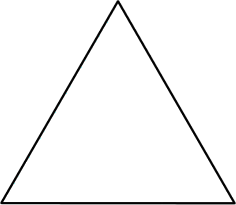Books, Brochures, and Chapters>Book: Han, Byung-Chul (2015), The Burnout Society, stanford briefs, Retrieved on 2024-12-01
Folksonomies: critical theory Memes
01 DEC 2024
 The Infection Metaphor
The Infection Metaphor
Every age has its signature afflictions. Thus, a bacterial age existed; at the latest, it ended with the discovery of antibiotics. Despite widespread fear of an influenza epidemic, we are not living in a viral age. Thanks to immunological technology, we have already left it behind. From a pathological standpoint, the incipient twenty-first century is determined neither by bacteria nor by viruses, but by neurons. Neurological illnesses such as depression, attention deficit hyperactivity disord...Folksonomies: critical theory
Folksonomies: critical theory
01 DEC 2024
 From Disciplinary to Achievement Society
From Disciplinary to Achievement Society
Today’s society is no longer Foucault’s disciplinary world of hospitals, madhouses, prisons, barracks, and factories. It has long been replaced by another regime, namely a society of fitness studios, office towers, banks, airports, shopping malls, and genetic laboratories. Twenty-first-century society is no longer a disciplinary society, but rather an achievement society [Leistungsgesellschaft ]. Also, its inhabitants are no longer “obedience-subjects” but “achievement- subjects.”...Folksonomies: critical theory
Folksonomies: critical theory
01 DEC 2024
 Learn to See, to Think, and to Speak and Write
Learn to See, to Think, and to Speak and Write
The vita contemplativa presupposes instruction in a particular way of seeing. In Twilight of the Idols, Nietzsche formulates three tasks for which pedagogues are necessary. One needs to learn to see, to think, and to speak and write. The goal of education, according to Nietzsche, is “noble culture.” Learning to see means “getting your eyes used to calm, to patience, to letting things come to you”— that is, making yourself capable of deep and contemplative attention, casting a long a...Folksonomies: critical theory
Folksonomies: critical theory
01 DEC 2024
 Zen Meditation is Proactive
Zen Meditation is Proactive
The negativity of not-to also provides an essential trait of contemplation. In Zen meditation, for example, one attempts to achieve the pure negativity of not-to—that is, the void—by freeing oneself from rushing, intrusive Something. Such meditation is an extremely active process; that is, it represents anything but passivity. The exercise seeks to attain a point of sovereignty within oneself, to be the middle. If one worked with positive potency, one would stand at the mercy of the objec...Folksonomies: critical theory
Folksonomies: critical theory
01 DEC 2024
 Cultural Achievement Undermines Contemplative Attention
Cultural Achievement Undermines Contemplative Attention
Excessive positivity also expresses itself as an excess of stimuli, information, and impulses. It radically changes the structure and economy of attention. Perception becomes fragmented and scattered. Moreover, the mounting burden of work makes it necessary to adopt particular dispositions toward time and attention [Zeitund Aufmerksamkeitstechnik]; this in turn affects the structure of attention and cognition. The attitude toward time and environment known as “multitasking” does not repre...Folksonomies: critical theory
Folksonomies: critical theory




